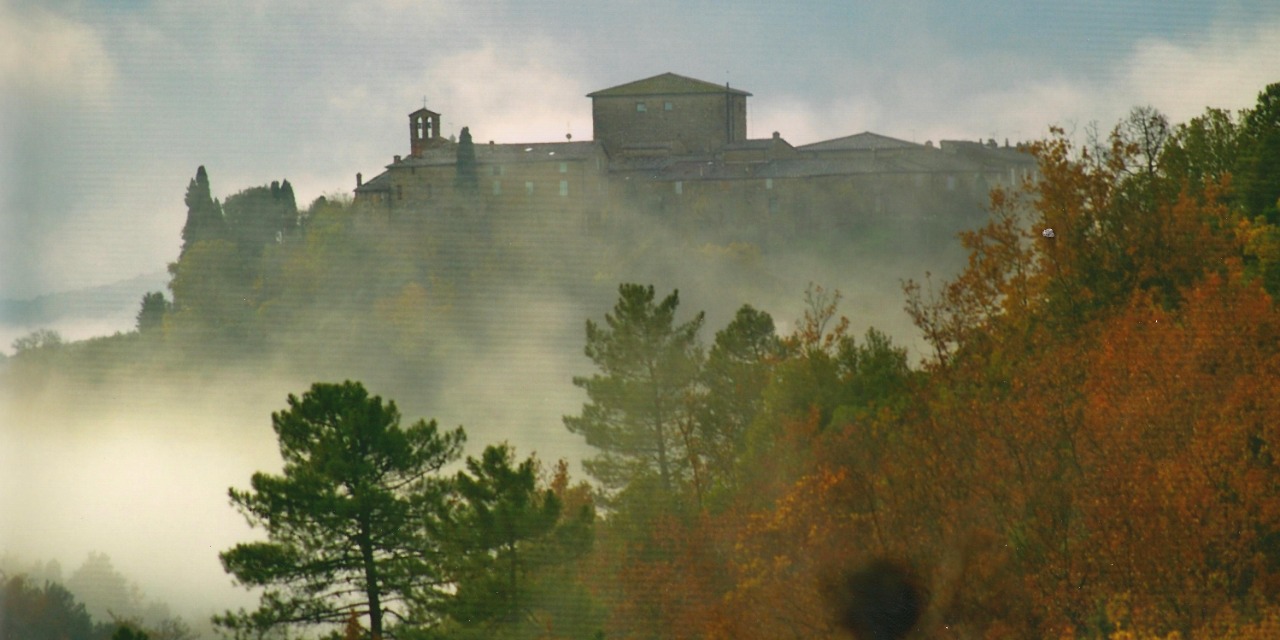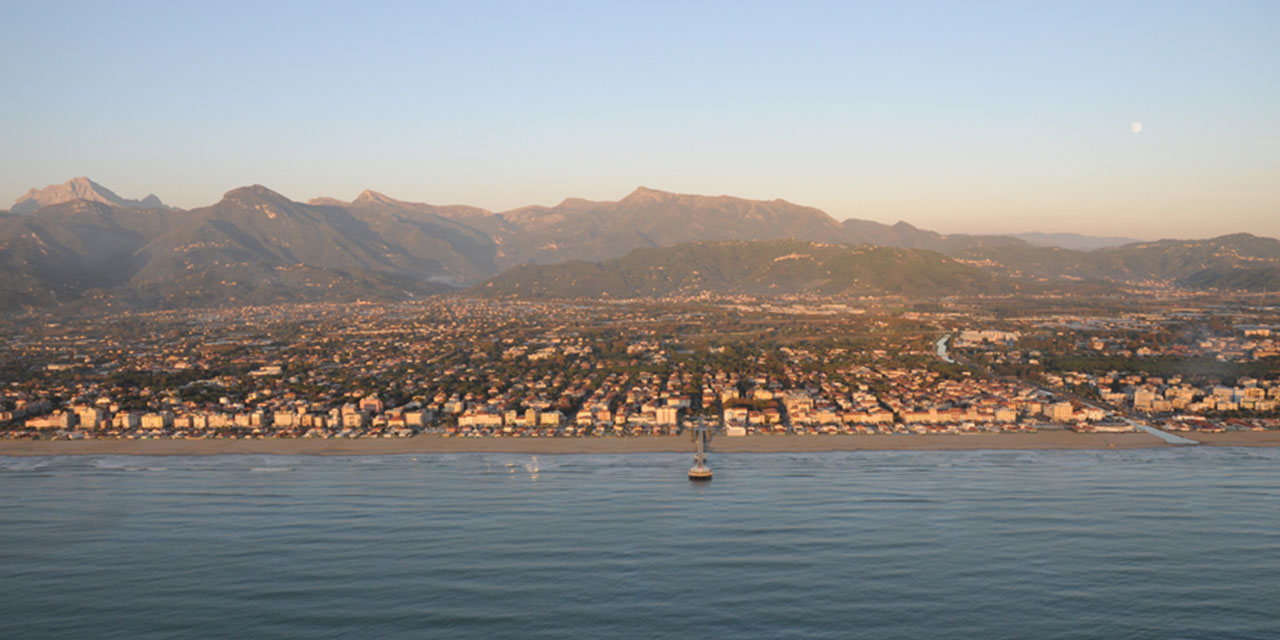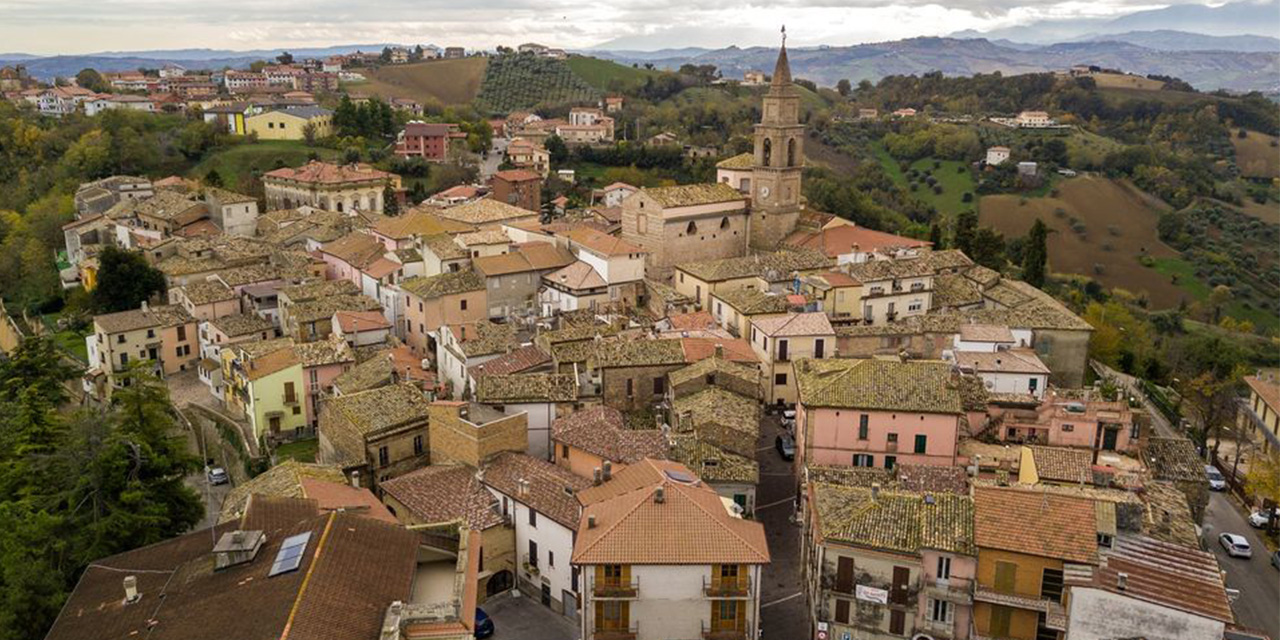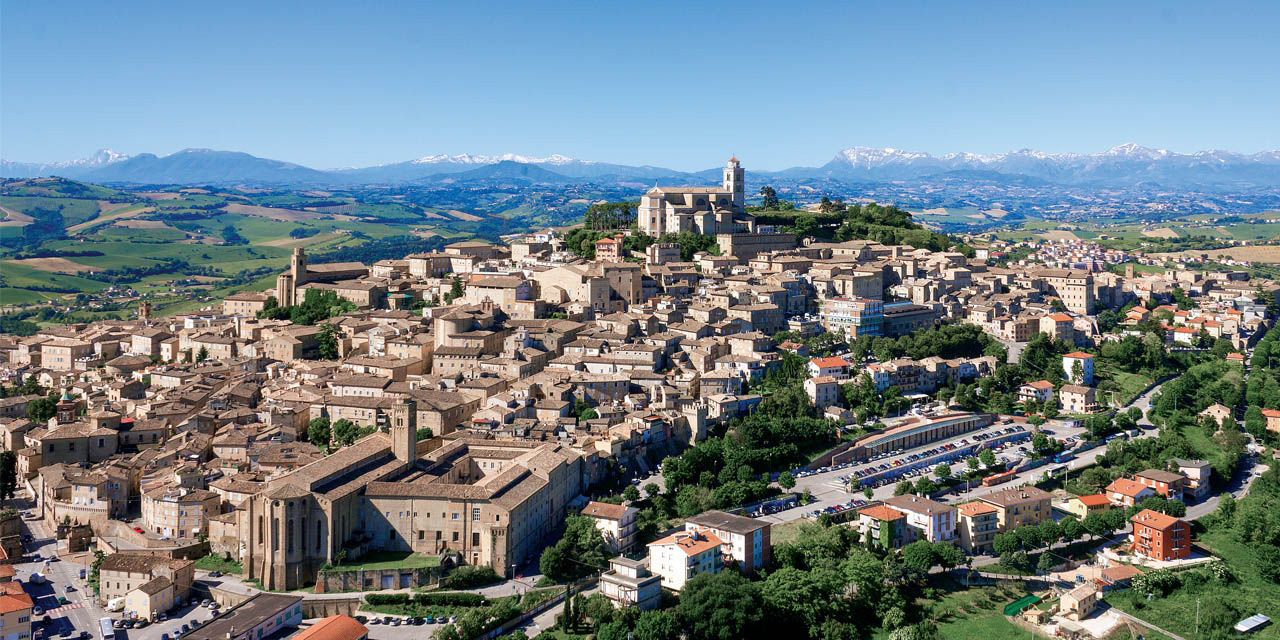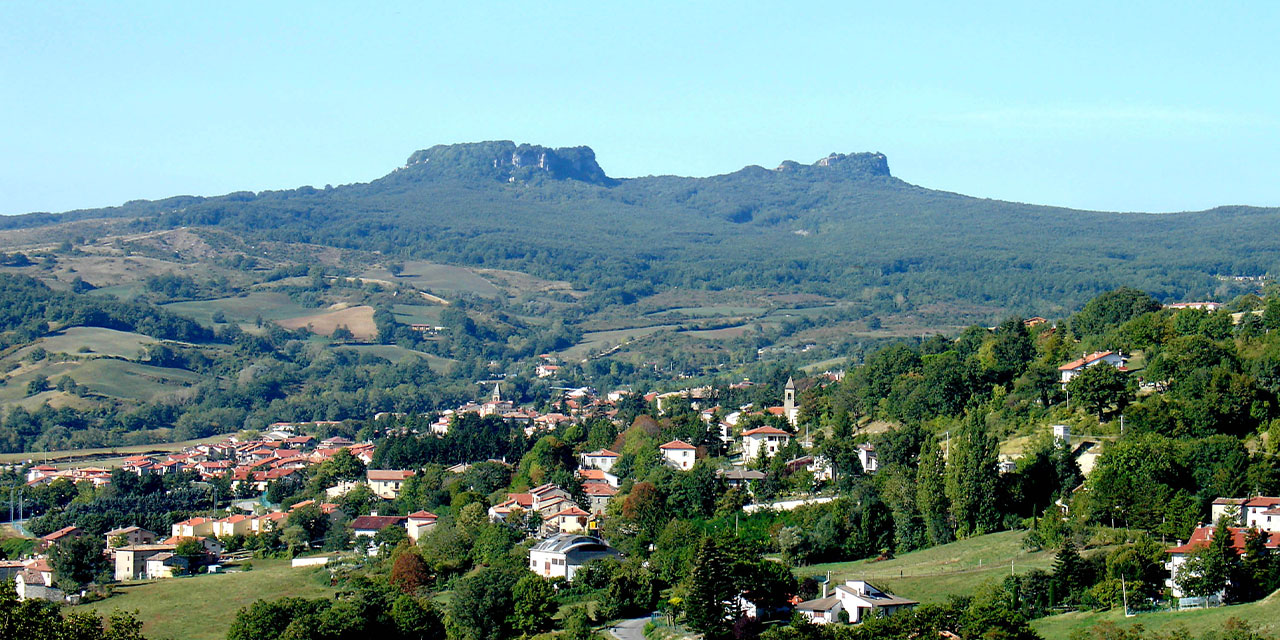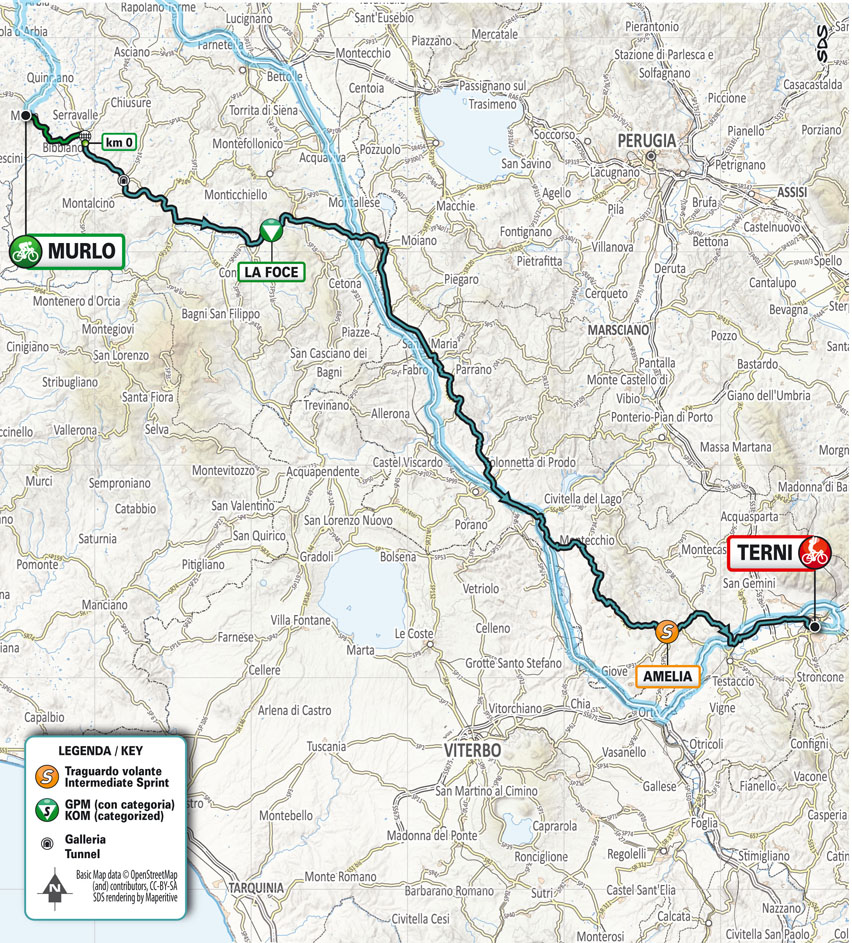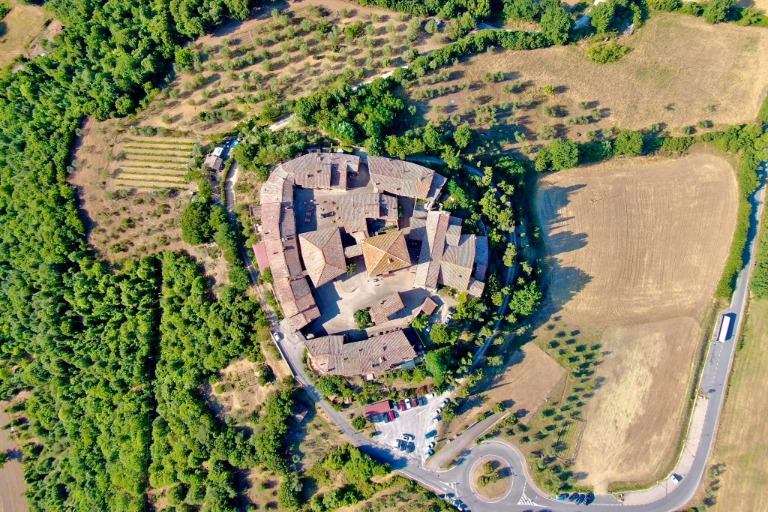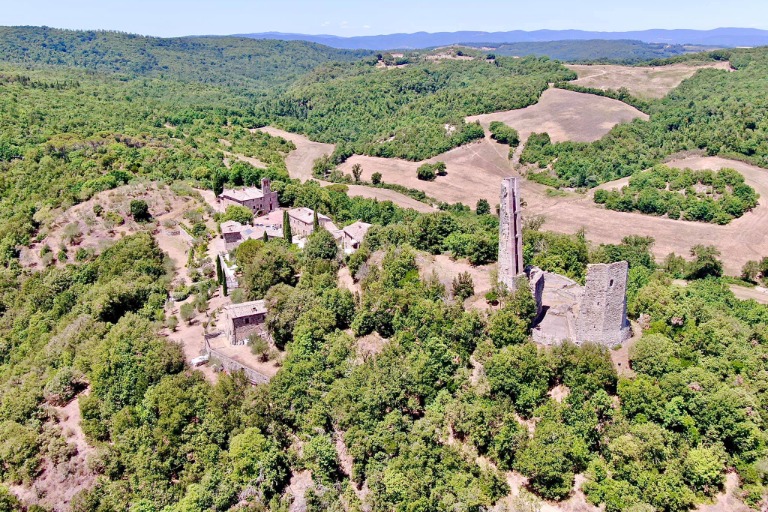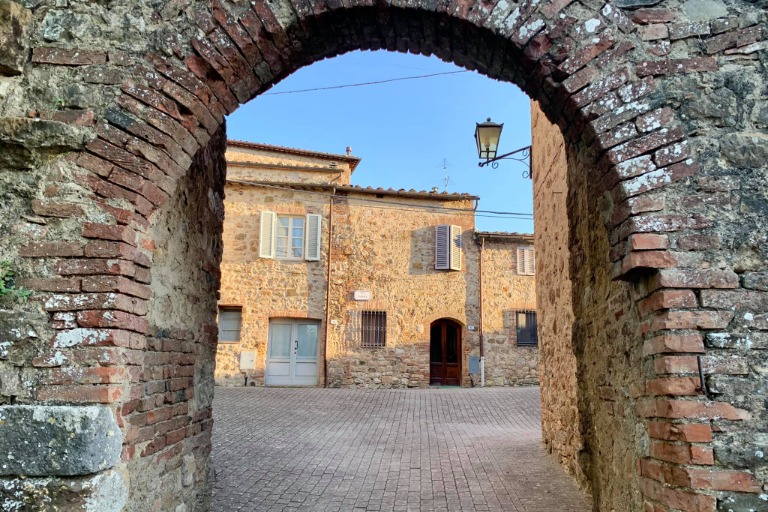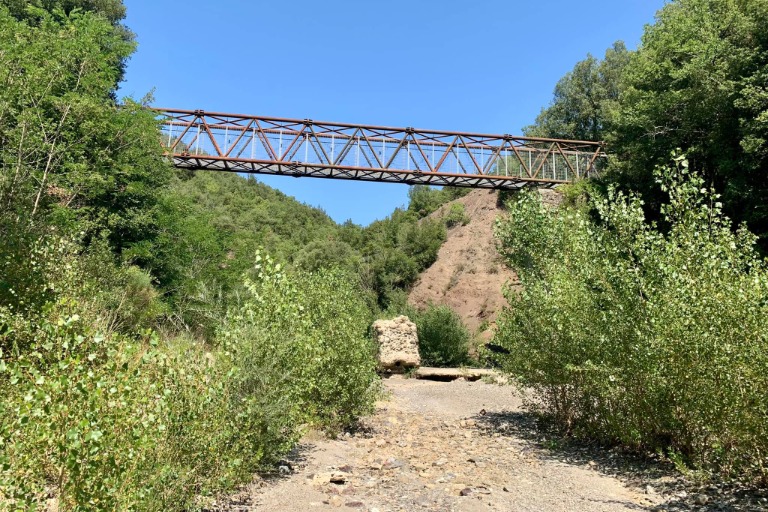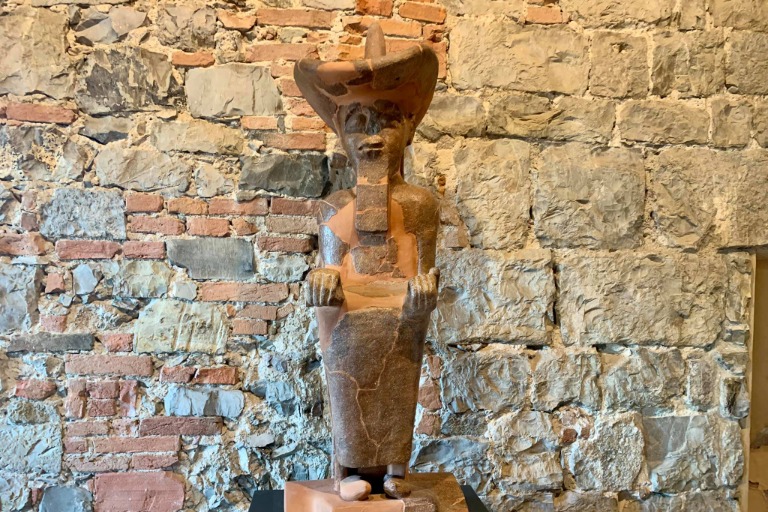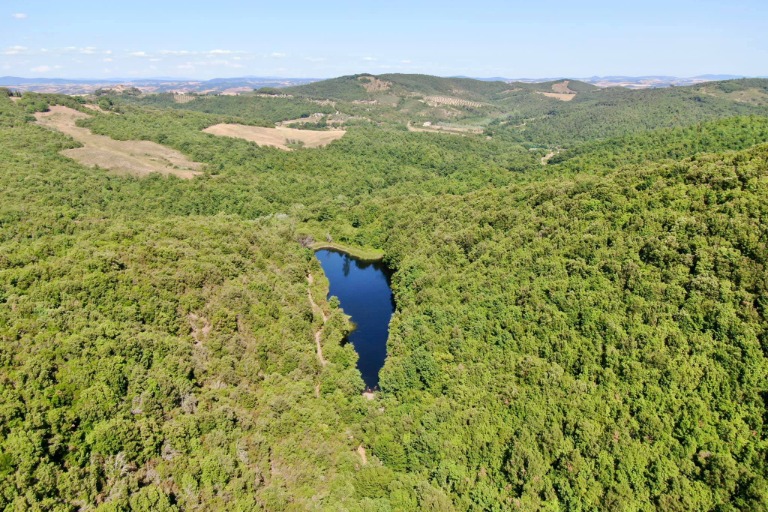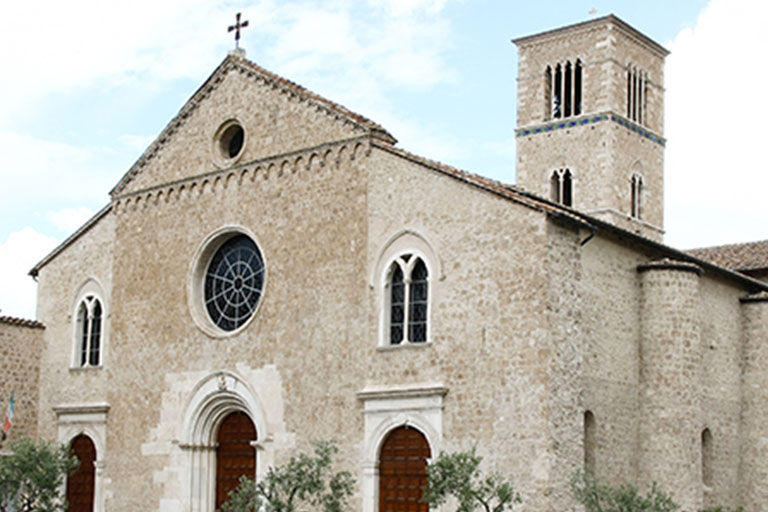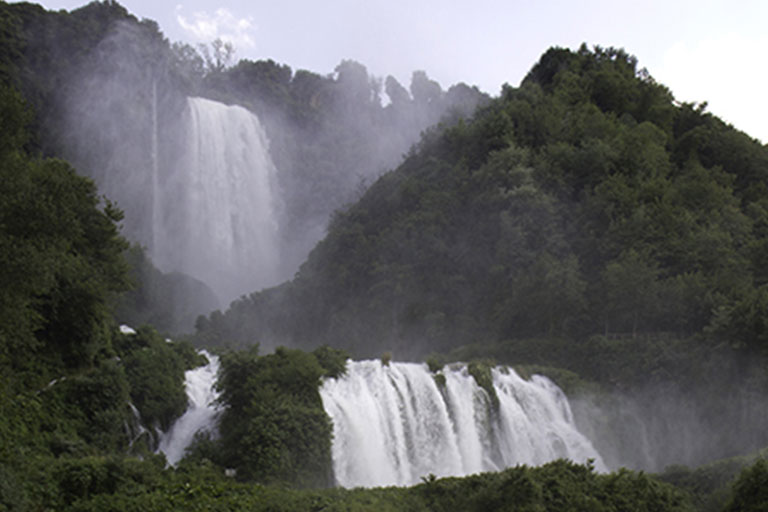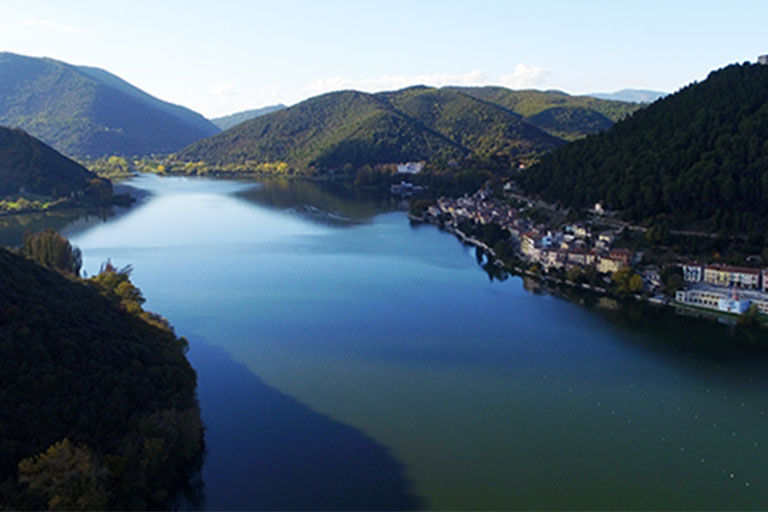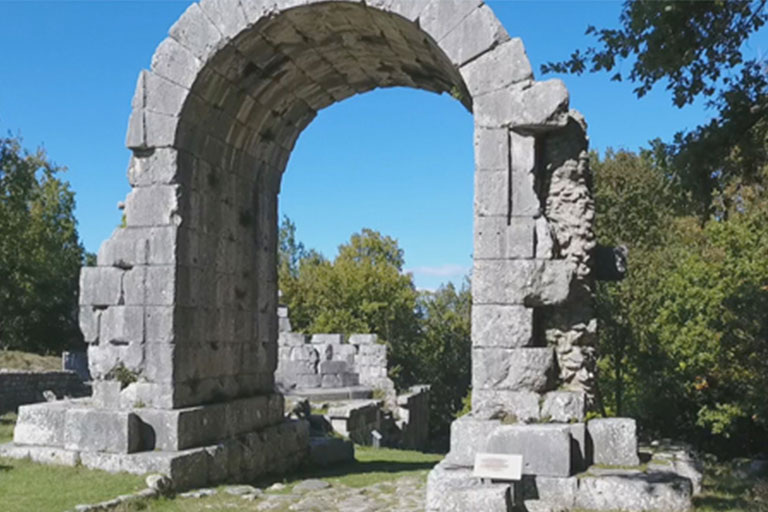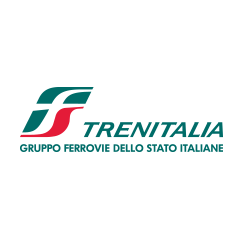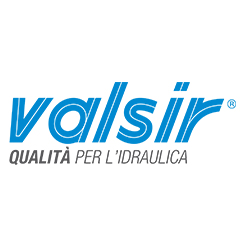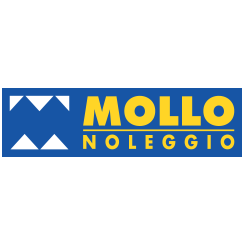profile
map
technical info
A slightly undulating stage punctuated by short straights and flat stretches of rest. The first part of the stage features some noteworthy climbs such as the ‘La Foce’ and the road between Fabro and Ficulle. After Orvieto the stage finale begins, which remains challenging both in terms of elevation and terrain. After Amelia the riders face a long descent to enter the Narni and Terni plain. Wide and straight roads follow, with a sometimes well-worn road surface, but without excessive difficulty, leading to the finish line in the city centre of Terni on Corso del Popolo.
Final Kilometers
The last 3km take place on wide, straight roads, sometimes with a central reservation present, interspersed with large roundabouts. Within the final kilometer, the riders will take a wide bend to the left on the flat. There is then a change from an asphalt surface to stone paving at the entrance to the 350m long finishing straight on a 7.5m wide road.
start / finish
final kilometres
itinerary timetable
tourist info
Host city:
Murlo
Overview
Murlo is located in a magnificent position overlooking the Arbia and Ombrone valleys, with Montalcino in the distance, creating a natural border between the lush green woods of the Val di Merse and the infinite colors of the sinuous Crete Senesi. The municipality dates back to the Etruscan times, while in more recent times, Murlo was an important bulwark in defense of the nearby Sienese hills due to its strategic position. It was also the ancient capital of the Bishopric of Siena.
The castle, has a typical fortified structure that dates back to the 12th century, but the floor plan, as it appears today, testifies to the transformation that took place at the end of the 1500s, after the fall of the Republic of Siena. It reveals the castle structure of walls dominated by small houses that surrounded the Bishop’s palace, currently housing the Archaeological Museum, the prison building and the cathedral.
Near the ancient castle is the largest village of the municipality, Vescovado di Murlo. Other noteworthy urban areas in the municipality of Murlo are: La Befa, a tiny group of houses on the road that led to Maremma, developed around the railway station and the Ombrone river. The railway connected Grosseto with the nearby Murlo mines of lignite, which was important for the development of the area. Interesting remains of the mining area are still visible inside the small town and along an educational route on the coal railway. A second village of note in the municipality is Casciano di Murlo, located on a hill overlooking the entire Lower Val di Merse and the southern part of the Ombrone valley. Not to be forgotten are Montepescini and Vallerano, two ancient peasant villages of quarry men and miners, found in the peaceful woods on the edge of the Basso Merse Nature Reserve.
Food
- Crostini con fegatini e acciughe
- Crostini al dragoncello
- Bruschetta
- Cecina (farinata di ceci)
- Pappardelle al cinghiale o alla lepre
- Pasta e ceci
- La panzanella
- La ribollita
- Bistecca alla griglia con rucola (or with mushrooms)
- Fagiano alle olive nere
- Arista di Cinta Senese al forno
- Fiori di zucca fritti, o farciti con acciughe e mozzarella
- Zucchine ripiene
- Castagnaccio
- Panforte, panpepato, ricciarelli, cavallucci e copate (or torrone senese)
Points of Interest
The Grand Tour of the Val di Merse is a territorial development project. It is a 173 km cycling itinerary created by two local cyclists, and their passion not only for cycling but also the territory. They found their inspiration to create the project and itinerary in the nearby Eroica cycle route.
The project is constantly evolving to improve the route and services offered. These include:
- Downloadable gpx route
- After the Eroica it was the second permanent itinerary entirely equipped with road signs in accordance with the Highway Code;
- It’s the first regional greenway completely equipped with charging stations for e-bikes;
- Together with the Eroica and Strade Bianche it has a permanent patent which, if completed, provides the cyclist with a Certificate of Value (a diploma) and the inclusion of the cyclist’s name in the Register of People, that is a list of all the “finisseurs” of the itinerary.
- It is one of the must-dos of the Strade di Siena brand;
The first edition of the Val di Merse Cycle Tour will be organised in Radicondoli on the weekend of 12-13 March, immediately after Strade Bianche and the Tirreno-Adriatico. The event will take places on the Grand Tour route, and includes 4 itineraries of different levels, providing a route suitable for all types of cyclists.
The Grand Tour route, in addition to being included in the slow mobility Masterplan drawn up by the Provincial Administration of Siena, is part of the provincial cycling routes that form the plan for cycle-tourism development programs.
In 2020, with of the collaboration “Terre di Casole Bike Hub”, two major events took place:
- February: at the of the Cosmobike international fair held in Verona, the route was awarded third place in the “Italian Green Road Award” and is considered one of the most beautiful green cycling roads in Italy;
September: During her stay in the Val di Merse, Paola Gianotti , a Piedmont champion attended the installation of the road signs of the cyclist road safety campaign she promotes (together with Paolo Cavorso, Maurizio Fondriest and most recently Daniele Bennati).
The most recent achievement will occur in May 2022. Created by a virtuous synergy with the Eroica, the Grand Tour area will be the scene of the first edition of Eroica Under 23. A new event that will start from Siena and arrive in Chiusdino, following the path of the Camaiore-Chiusdino stage of Tirreno-Adriatico 2021 won by world champion Julien Alaphilippe.
The Grand Tour of the Val di Merse is a clear example of how the bicycle “product” is not the simple availability of safe infrastructures, but it requires the availability of efficient services adapted to the needs of the bike traveller. The message to national and international cyclists is: come and ride in Val di Merse, the authentic heart of the Terre di Siena, where you can enjoy the infinite beauty that distinguishes Tuscany without worries following a route on secondary roads with little traffic.
Terni
Touristic information
In spite of its industrial reality Terni, the ancient Roman Interamna Nahars is among the greenest cities in Italy with its 149 square meters of greenery per inhabitant and has a very large number of monumental trees in its territory, as many as 37 of which 26 in urban center. But it is very ancient, founded in 672 BC, by the Proto-Umbrian Naharki, it is still surrounded by the mountains and its waters, the Nera river and the Serra. Rivers, lakes, streams, waterfalls, woods and plains have earned it the nickname of the enchanted valley. Traveled for its fame by the greats of the Grand Tour (Byron, Goethe, Andersen) of the late eighteenth century and by the plenarist painters (Corot, Palm, Blechen).
It jealously preserves its roots, in the Claudia Giontella Archaeological Museum, its ancient heart in the Duomo district, and its contemporaneity in Piazza Tacito, where, after the restoration, the fascinating fountain of the Zodiac shines. It is one of the rare Italian cities, where industry, metallurgy, indeed the wisdom of melting metals, has managed to transcend into art and become a work with Arnaldo Pomodoro (The lance of light), Agapito Miniucchi (L’Hyperion ) and Umberto Mastroianni (Le Forme) and recently with “the eternal embrace” by Mark Kostabi,
But the modern city with an ancient heart embodies an innumerable series of surprises, ranging from the works, including Benozzo Gozzoli, exhibited in the Aurelio De Felice museum, to the church of San Francesco, with the Paradisi Chapel of Bartolomeo di Tommaso , to the Manassei chapel of the Church of San Salvatore, that is the Temple of the Sun, complete with a Roman Domus in the floor below.
For fans of city charm, do not miss the famous alleys of the “Terni Vecchia” in the Duomo area, Vico Birreria, Vico del Pozzo, Vico Sant’Alò a maze of narrow streets with views, really romantic and retro. From there, a step away is the Duomo and shortly after the Roman amphitheater Fausto which turns out to be older than the Colosseum in Rome, as it was built in the Julio-Claudian era under the emperor Tiberius approximately in 30 or 32 A.D.
A visit to the bust of Publio Cornelio Tacito, (about 55-117 AD) the Roman historian, who according to tradition is a native of Terni, which contemplates the obelisk of Arnaldo Pomodoro and a unique city view, because there the ancient seems to merge with the contemporary.
But the city hides, another gift, from the Roman era. Terni was the birthplace of Valentino, (176/276 AD about the dates are being reviewed in historical review ed.), who then became Bishop and who was martyred on February 14, 273/373 of AD near the current Ponte Milvio, in Rome, and buried at the 63 mile of the Via Flaminia, the Valentinian hill, where the homonymous Basilica stands today and which was destined to become San Valentino di Terni, the patron saint of lovers in the world canonized by Pope Gelasius I in 496 AD He also became patron saint of Terni, at the behest of the people in 1604, after the discovery of his tomb in the crypt below the Basilica,
Today in the 17th century basilica of the same name, it is possible to go to the crypt near his tomb and be fascinated by his sublime message of love and reconciliation that is always current and unchanged over the centuries.
Gastronomy
Since ancient times, truffles have interested philosophers and scientists. Greek philosophers claimed that truffles were rootless vegetables that originated during the autumn rains accompanied by thunder. The Romans were very fond of it and the Latin poets sang its praises and dictated its cooking rules. In the Renaissance era he was the prince of the table in the refined stately courts. Valuable product of nature with an unmistakable scent, it is appreciated and highly sought after. The Terni mountain is rich in it and produces various types, from the unmistakable black to the even rarer white; in summer it offers types of truffles equally appreciable in flavor and aroma, the “scorzone” and the “bianchetto”. Combined with food and dishes, the truffle is widely used in local cuisine.
Drinks
The cultivation of the olive tree is one of the oldest in Italy, already present since the Etruscan era. Although at a national level the production of oil is somewhat reduced, the Umbrian oil stands out as an oil of a certain value, obtaining in 1997 the European recognition of the Protected Designation of Origin Umbria, the only one at national level to enclose a whole region. The credit of all this is the combination of the climatic conditions of the territory: the characteristics of the soil and the mildness of the climate have favored the cultivation of the olive tree which has always been planted in the various species (moraiolo, leccino, rajo, frantoio). To enjoy the quality of the oil, bruschetta is a must: toasted bread scented with garlic, salt and plenty of olive oil.
The culture of the vine has, in our territory, millennial traditions. In the first book of the Georgics, Virgil recalls the patience with which the vintners of the time dedicated themselves to the cultivation of vines in these pleasant places. We are in the lands crossed by the high course of the Tiber, which gives life to vines. The following wines are produced from the vineyards located in favorable exposure soils in the various municipalities of the province of Terni: White, Red, Rosé, Novello, Malvasia. The Association of the Etruscan Ro-mana Wine Route, which mainly winds in the province of Terni, was born with the aim of promoting in Italy and abroad a particular form of conscious tourism, which combines the knowledge of the territory with that of environmental and agricultural products.


